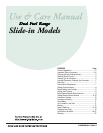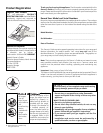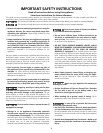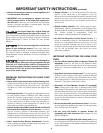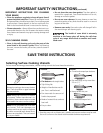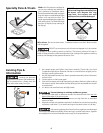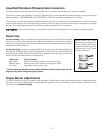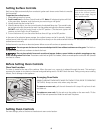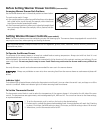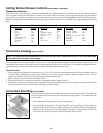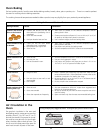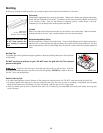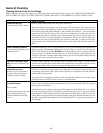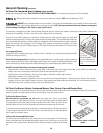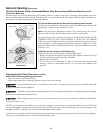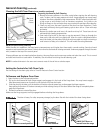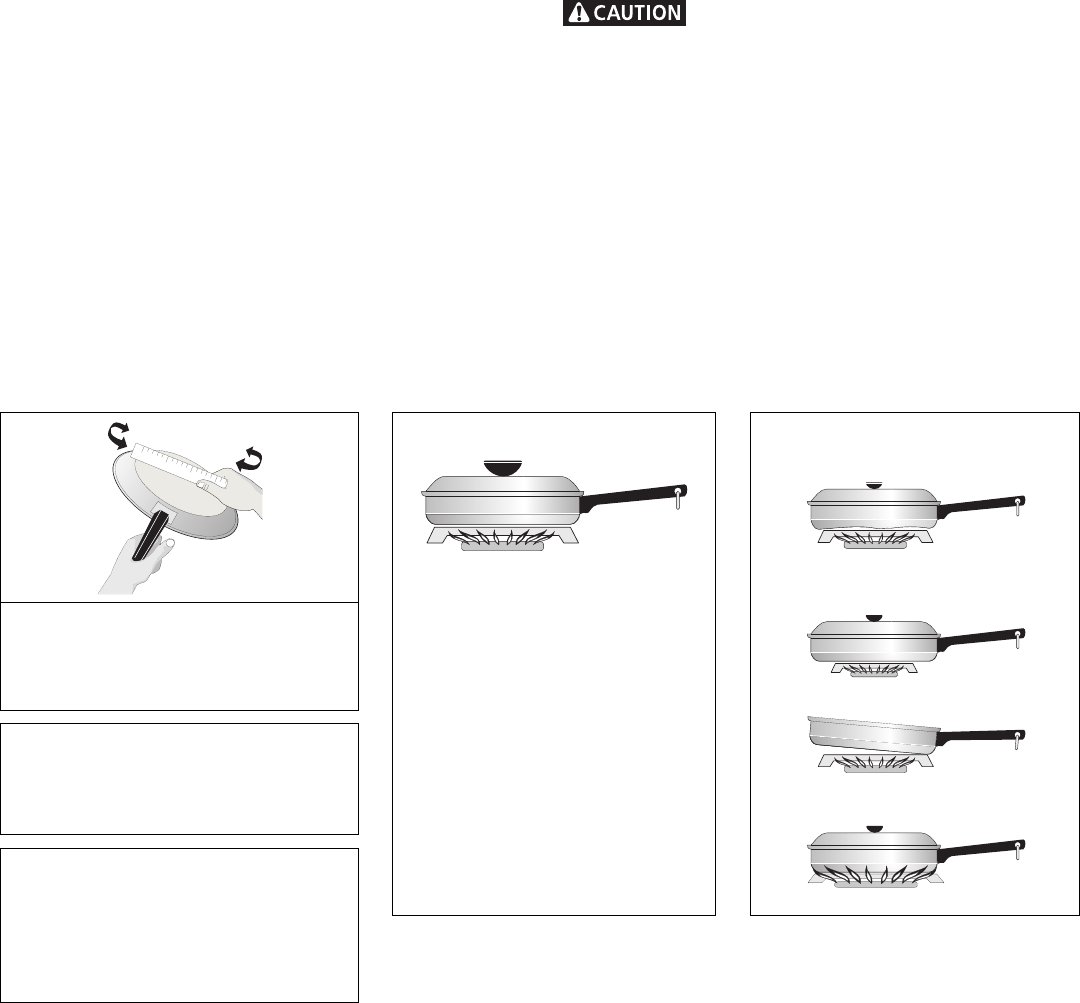
5
IMPORTANT SAFETY INSTRUCTIONS (continued)
IMPORTANT INSTRUCTIONS FOR CLEANING
YOUR RANGE
• Clean the appliance regularly to keep all parts free of
grease that could catch fire. Exhaust fan ventilation hoods
and grease filters should be kept clean. Do not allow grease
to accumulate. Greasy deposits in the fan could catch fire.
Refer to the hood manufacturer's instructions for cleaning.
• Cleaners/aerosols—Always follow the manufacturer's rec-
ommended directions for use. Be aware that excess residue
from cleaners and aerosols may ignite causing damage and/
or injury.
SELF-CLEANING OVENS
• Clean in the self-cleaning cycle only the parts of the
oven listed in this owner's guide. Before self-cleaning
the oven, remove the broiler pan and any utensils stored in
the oven.
SAVE THESE INSTRUCTIONS
• Do not clean the oven door gasket. The door gasket is
essential for a good seal. Care should be taken not to rub,
damage or move the gasket.
• Do not use oven cleaners. No oven cleaner or oven liner
protective coating of any kind should be used in or around
any part of the oven.
• Remove oven racks. Oven racks color will change if left in
the oven during a self-cleaning cycle.
The health of some birds is extremely
sensitive to the fumes given off during the self-clean
cycle of any range. Move birds to another well venti-
lated room.
Pans should have flat bottoms. Check for
flatness by rotating a ruler across the bot-
tom. There should be no gaps between
the pan and ruler.
Note: Always use a utensil for its intend-
ed purpose. Follow manufacturer's in-
structions. Some utensils were not made
to be used in the oven or on the cooktop.
* Specialty pans such as lobster pots, griddles and pressure cookers may be used
but must conform to the above recommended cookware requirements.
Note: Do not use griddle over more than
one burner. That can damage your
cooktop and that can result in exposure
to carbon monoxide levels above allow-
able current standards. That can hazard-
ous to your health.
Selecting Surface Cooking Utensils
For best results and energy conservation, choose cooking utensils that have these characteristics:
*GOOD
• Flat bottom and straight sides.
• Tight fitting lids.
• Weight of handle does not tilt
pan. Pan is well balanced.
• Pan sizes match the amount of
food to be prepared.
• Made of material that conducts
heat well.
• Easy to clean.
POOR
• Curved and warped pan bottoms.
• Pan overhangs unit by more than
2.5 cm (1”).
• Heavy handle tilts pan.
• Flame extends beyond unit.



